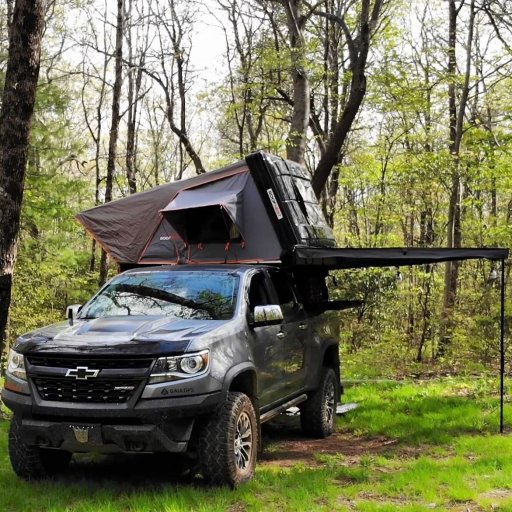When you say you are used to travelling a lot with your 4Runner, how do you live on the road? I ask because that's all Overlanding really is -- it's living on the road in vehicles; for some, it's living 'off' the road, but don't let that scare you - the vast majority of Overland travel is done on pavement. The next biggest part of the pie chart is gravel roads. A much smaller slice of the chart is technical trails/off road where one would need lockers and skids, but for the bulk of the chart you can do it in even a basic sedan and see most of the best spots, so your 4Runner is already a premier rig for Overland travel as-is.
The only other things you need are place to sleep and a way to provide yourself nutrition. The rest is "nice to have", but that nice to have stuff adds up fast, and the biggest mistake beginners make is feeling they "need" too much stuff. The marketing is effective, and I fall for it myself sometimes! But based on that, I would suggest taking a step back from the "Overlanding World" perspective to start with, otherwise you'll soon be convinced that if you don't have $1000 in MaxTrax, a Scottle, and a GFC that you aren't really "Overlanding" at all!
Instead, take a look at how other types of travellers do it -- in particular, I encourage you to look at long-distance backpackers. They have to live - sometimes for months - out of a single 60-80 Litre backpack, and they do it all the time. If you start there, you will avoid the bloat that often comes with an Overland build, so let's take a look at what a typical Backpacker uses based on your asks:
1) Sleeping. Backpackers don't have the option for an RTT. The ultralight and cheap option is a Tarp and some cord. That will give you "good enough" shelter, but given your "backpack" has a payload of over a thousand pounds, I'd suggest that the tarp is a bit too much of a compromise (bugs and rain) to justify; most backpackers agree, and even in their limited space they will often, like you, get into the realm of the next level up, which is a decent ground tent. For this you will have two considerations to start with:
- How much room do you need in the tent? A 3-man tent is typically only good for two people; inside the tent you are likely going to want a little bit of room for a water bottle or a change of clothes, and so I would say figure out how many people you travel with and add one extra person to your tent size.
- Your budget. Tents of many sizes can be had at Wal Mart for cheap, and frankly if you just want to get out for a few Overland trips per season, there's nothing wrong with a Wal Mart tent. It might not last decades of heavy use, but it will give you some experience actually doing it so you'll know what works and doesn't work for you. If you want something a bit more robust, look to the bigger brands (MSR, North Face, Mountain Hardware), and rely on backpacker websites like Trailspace: Outdoor Gear Reviews for reviews to inform your purchase.
The advantage of a roof tent over a ground tent in my experience are all in the "nice to have" category -- it means you never need to worry about the quality of the ground (rocks, roots, gravel or pavement - it matters not for an RTT as long as your car is roughly level). It also puts you up in a bit of a 'tree house' which some people like. And finally, it saves you from having to pack your bedding every day because it can stay up there. But I suggest start with your ground tent -- soon you'll know if you're spending a lot of time camping on bad ground, or if you really just don't want the hassle of packing a sleeping bag into a stuff sack, but starting with a ground tent means you're only out $200 instead of $2,000 +. You may also find that you prefer a non-tent experience, like a trailer.
2) Climate Control - You may never need it. Even a mediocre tent will be extremely well ventilated and flow a lot of air and can provide comfort in a huge range of temperatures. I've slept in my tent in +41 Celsius, and -32 Celsius - same tent, and reasonably comfortable (I might not do the -32 again though!). Whether you do need climate controls or not will be very dependent on where you travel; a lot of the Overlanding destinations I tend to visit are either at altitude (so it gets nice and cool at night when I'm in the tent) or deserts (same thing, pretty cool at night). In some heavy bush/swampy areas and closer to the equator, it can get warm at night but the human body is pretty well evolved for this climate and after a few days, you'll get used to the heat. And again, a good tent with airflow makes it easy. This "you might not need it" isn't just my experience -- there are hundreds if not thousands of people travelling the world right now in everything from a backpack all the way up to Earth Roamers; the vast majority of travellers do not have climate control in their sleeping spaces for hot weather. For cold weather, it's all about the layers.
3) Sleeping Bag - Depends where you go. Get a synthetic bag; it will insulate you even if it gets wet, and the minimal weight/packability penalty of synthetic over down is negligible in a vehicle. You can always add sleeping bag liners, and sleep in wool long johns or even more layers if you need to, so I would suggest buying a temperature range that is on the higher 1/3 of the range you will typically camp in. If you get a few freak weather events that drop the thermometer you can always layer up. It's harder to layer down when it's hot. Again, I suggest reading reviews on Trailspace.com to pick one that works for you. Your key considerations here:
- Bag Rating. Like I said above, get one that is rated to your typical camping temperatures. If you normally camp in a place where it hits around 20 Degrees C at night, get a bag rated for that.
- Your sleeping style. Are you a hot sleeper, or a cold one? That could influence the rating of bag you get.
- Bag shape. Some people like mummy bags, other people find them super restrictive and prefer barrel-style bags. 100% your preference though Mummy bags tend to be warmer for their size/weight.
- Zipper location. I prefer my zippers on sleeping bags to open towards the inside of the tent, which means my zipper has to be on the opposite side of my travelling partners zipper. There's a few reasons for this -- zippers tend to be an ingress for water, insects, and cold air, and so if it's facing the inside of the tent instead of the outside, the risk is less. The other reason is I regularly camp with my partner, and zippers facing the inside make it easier to snuggle up for a bit when going to bed, while easily transitioning into a fully zipped bag if we need to.
4) Food and water - this isn't on your list, but you'll need a plan for this. It can be as simple as a way to boil water (the Jetboil works great) and buying enough Mountain House dehydrated meals to last you your journey. In Alaska, that''s what I relied on because space was a premium, and groceries were few and far between. You can also go really fancy and get a 12V fridge, a full kitchen cooking set, and a multi-burner stove. That's what I now use, and it's amazing! But totally overkill. An MSR Pocket Rocket stove can be had for very cheap these days ($50), and can do more than boil water so it's a bit more versatile than the Jet Boil, and it's what I started with. I suggest that you try living only off that camp stove and your chosen nutrients for 3 days at home -- plan your grocery shopping and meals accordingly, and see how you like it. If you can get by comfortably at home (where worst case your dinner is an Uber Eats away if something goes wrong!) you'll know if you need more cooking/nutrition resources when travelling or not. For water, I bring a 5 gallon jerry can that I fill before I go ($20), with a Sawyer Mini ($20) for emergencies.
Enjoy the adventures, and feel free to keep asking questions -- a lot of people on this board and others have made a ton of very expensive mistakes over the years, and I think all of us are more than happy to share that learning to save you the headache!








